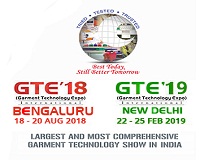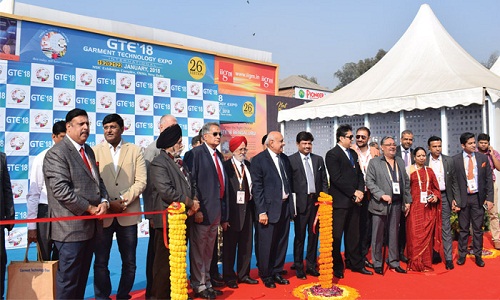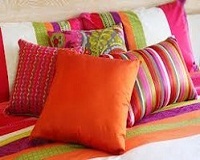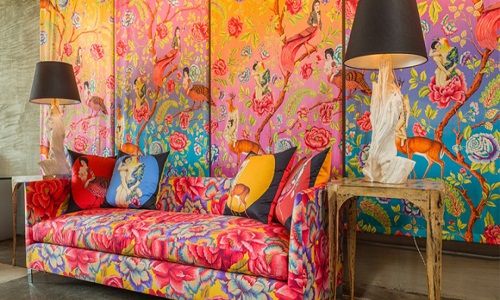FW
The Green Supply Chain Map has top notch brands as its members. This is an online transparency tool that ties companies to their suppliers’ environmental performance in China. It collates data from the Chinese government and member brands to map out and monitor the individual performance of supplier factories based around China.
The online tool, launched at the start of the year, details the names, addresses and geo locations of supplier facilities and provides real-time emissions data, feedback about corrective actions and resource use information.
Among the members of Green Supply Chain Map are Levi’s, Tesco, Target, Esprit, New Balance, Puma, Adidas, Gap and Inditex. These are leaders in supply chain transparency and environmental management.
So 70 of Levi’s’ suppliers and 145 of Tesco’s suppliers will have their supply chains made publicly available on the Green Supply Chain Map. Users of the online tool are then able to filter information by brand and assess details relating to air emissions and wastewater discharge from individual supply chains.
These suppliers primarily conduct wet processing operations, such as dyeing and finishing of fiber and leather. The tool gives companies the real-time information they need to ensure environmentally responsible operations from afar. It also allows customers and other concerned members of the public to gain greater transparency around companies’ environmental impact.
Chinese and US textile and apparel organisations are concerned about escalating trade tensions and have voiced their opposition to protectionism. Tariff increases are not just a tax on consumers it also brings uncertainty to the supply chain for brands. Top brands depend a lot on a stable global supply chain.
Around 1,000 types of Chinese products in the textile and apparel category are subject to tariffs imposed by the US. The products, mainly raw materials such as yarns and fabric, range from silk and cotton to lace and embroidery. However, in order to not hurt consumers, the tariffs have been focused on manufacturing inputs rather than clothing, footwear and home textiles.
Though American brands and retailers are sourcing from many other countries, including Vietnam, Bangladesh, India and Indonesia, as well as countries in the western hemisphere, they feel there aren’t enough viable sourcing in the world to replace China – and especially not the quality sourcing that they want. US companies are very concerned about the broader implications of protectionism for their economy, consumers and the global economy.
Neither US consumers, nor fashion brands or Chinese textile and apparel manufacturers are expected to benefit from the conflict. The US will take a final decision by the end of August.
Burberry has recently acquired a new logo that says "Burberry London England" in stark capital letters, replacing the softer, rounder font the company previously used. The brand also adopted a new monogram print featuring interlocking T's and B's—for its founder, Thomas Burberry.
The graphics were designed in collaboration with the British art director and graphic designer Peter Saville, who last year revamped the Calvin Klein logo with Raf Simons. The logo and monogram print recently began appearing across all of Burberry’s channels and in a new advertising campaign.
The new logo was adopted after recent public outrage over Burberry reportedly burning unsold clothing stock worth €28 million. The London-based brand, which joined Nike and H&M in an initiative to improve industry sustainability earlier this year, said the move was in an effort to protect against counterfeiters. Many consumers had voiced their disapproval, and ThredUp, an apparel resale site, penned an open letter it released on Instagram.
An ambitious startup - the Walls of Benin - led by 30-year-old Chi Atanga, a man from Cameroonian born in Manchester, England, plans to build factories in Africa for making stylish and sophisticated sleepwear, loungewear and casualwear that is suitable for all occasions
Atanga, who researched and designed the business plan for Walls of Benin, is now setting up operations in a Special Economic Zone outside the coastal city of Mombasa, Kenya's second-largest city. He will take the spirit of African print textiles and swap wax and heavy cloth for more luxurious and ecological fabrics. Kente, Ghana's famous silk-and-cotton blend is an example of an African fabric, while silk and Tencel are natural fibres with extra softness and moisture-wicking properties.
Currently, Walls of Benin operates from Kenya and Rwanda, and imports silk and Tencel from Portugal. In April 2018, the company partnered with Wildlife Works, a wildlife conservation group based in Kenya, to launch an African production. It hopes to export luxury loungewear made of extra-soft silk and Tencel to Europe and elsewhere.
Bluezone will be held on September 4 to 5. This will reinforce denim’s sense of community and discovery. This edition will be the largest yet with more than 100 international brands in the denim and sportswear categories showcasing their latest fabric developments.
The show’s overriding theme for the season, Perpetuum Blue, reflects how the denim industry is in a state of constant motion. Through trend displays, workshops and presentations, Bluezone will bring to life how parallel universes like high fashion and non-fashion are developing in the denim sector.
New exhibitors at the already sold-out show include: Desert Studio, Pizarro Wiser, Hyosung Creora and Imatex. Fashion label Atelier & Repair will also present a collection in partnership with Candiani and Lenzing. Italian denim mill Berto will present its Pianeta fabric development made with upcycled production scraps.
Pakistan-based mills will showcase sustainable inroads they’re making. Rantex will introduce an eco-color concept, while Soorty will bring its Zero Waste Water collection. Meanwhile, Naveena will present its flexible performance technology, Wraptech.
For the first time, the outdoor area around Bluezone will be used as additional exhibition space. The street festival-inspired space, called the Blue Yard, will offer a blend of old and new, showcasing a mix of vintage showrooms and exhibits that revolve around new technologies.
"Garment Technology Expo (GTE), is one of the biggest and most comprehensive B2B expos for apparel machinery. The next edition of GTE ’18 will take place in Bengaluru from August 18 to 20, 2018 at Dr Prabhakar Kore Convetion Centre. This is the 8th edition of GTE to be held in South India. The three-day expo will showcase technologies related to making fine garments under one roof. The exhibits encompass technology dedicated to apparels, embroidery, laundry and steam finishing, knitting, digital printing and accessories. The first GTE Bengaluru was held in 2006 and since 2008, the expo is being held every alternate year."
 Garment Technology Expo (GTE), is one of the biggest and most comprehensive B2B expos for apparel machinery. The next edition of GTE ’18 will take place in Bengaluru from August 18 to 20, 2018 at Dr Prabhakar Kore Convetion Centre. This is the 8th edition of GTE to be held in South India. The three-day expo will showcase technologies related to making fine garments under one roof. The exhibits encompass technology dedicated to apparels, embroidery, laundry and steam finishing, knitting, digital printing and accessories. The first GTE Bengaluru was held in 2006 and since 2008, the expo is being held every alternate year.
Garment Technology Expo (GTE), is one of the biggest and most comprehensive B2B expos for apparel machinery. The next edition of GTE ’18 will take place in Bengaluru from August 18 to 20, 2018 at Dr Prabhakar Kore Convetion Centre. This is the 8th edition of GTE to be held in South India. The three-day expo will showcase technologies related to making fine garments under one roof. The exhibits encompass technology dedicated to apparels, embroidery, laundry and steam finishing, knitting, digital printing and accessories. The first GTE Bengaluru was held in 2006 and since 2008, the expo is being held every alternate year.
Many firsts
Many first time exhibitors will showcase their latest products and technologies at GTE ’18 to help the industry gear up for the future. These include exhibitors showcasing embroidery machinery, lazer cutting machines etc. They will launch innovative machines to cater to the domestic and export market. The three-day expo will host customers and international participants from over 22 countries.
gear up for the future. These include exhibitors showcasing embroidery machinery, lazer cutting machines etc. They will launch innovative machines to cater to the domestic and export market. The three-day expo will host customers and international participants from over 22 countries.
The nerve centre of the garment industry, home furnishing fabricators in South India, Bengaluru, is also the region’s biggest readymade garment production and export hub with over 1,500 factories employing 500,000 workers. The metro is conveniently connected with neighbouring states in the South. All major garment brands have set up production bases in the city while many big Indian garment exporters operate from the city.
Wide array of products on display
GTE ’18 will showcase a wide range of products including sewing machines, knitting, embroidery and digital textile printing machines, laundry & steam finishing equipment, quilting, spreading & cutting and leather garment machines, CAD/CAM, finishing & testing, fusing and dyeing machines, dyes & chemicals, spares & attachments, accessories & trims, fancy yarns, fabrics, IT enabled services, software solutions.
The biggest industry show in the subcontinent, GTE is patronised by trade professionals including manufacturers, exporters, institutions and other volume consumers. Numerous brand owners, CEOs, MDs, production heads and the like visit the expo to negotiate deals for new machinery while designers, technical supervisors, shop floor managers, etc, update themselves on new technologies, materials etc. The expo attracts visitors from all over Karnataka, Tamil Nadu, Madhya Pradesh, Andhra Pradesh, Kerala, Maharashtra, Goa, Gujarat and more. Designers, manufacturers, dealers, traders, distributors and agents are the target visitors.
Ensuring a good footfall
A promoter of value addition shows, GTE ’18 will ensure record footfall of genuine visitors. The expo is being publicised through all industry related trade magazines, media, emails, SMS messages etc to stakeholders in the garment industry. Prior to the expo, the organiser ensure extensive branding on autos, advertisements in all leading newspapers in India and hoardings in vantage locations.
"As per latest US customs data, the country’s imports of home textiles and made-ups grew at a robust 7.7 per cent to reach 8,740 million sq. mt. during the January-May 2018 period. Import of made-ups and home textiles of man-made fibres grew 10 per cent to reach 6,093.6 million sq. mt. In contrast, cotton made-ups and home textile imports grew by 1.6 per cent to reach 2,375.5 million sq. mt."
 As per latest US customs data, the country’s imports of home textiles and made-ups grew at a robust 7.7 per cent to reach 8,740 million sq. mt. during the January-May 2018 period. Import of made-ups and home textiles of man-made fibres grew 10 per cent to reach 6,093.6 million sq. mt. In contrast, cotton made-ups and home textile imports grew by 1.6 per cent to reach 2,375.5 million sq. mt.
As per latest US customs data, the country’s imports of home textiles and made-ups grew at a robust 7.7 per cent to reach 8,740 million sq. mt. during the January-May 2018 period. Import of made-ups and home textiles of man-made fibres grew 10 per cent to reach 6,093.6 million sq. mt. In contrast, cotton made-ups and home textile imports grew by 1.6 per cent to reach 2,375.5 million sq. mt.
Home textiles and growing business
In value terms however, US imports of cotton made-ups and home textiles during January-May 2018, were $3034.7 million, 1.41 per cent lower than during January-May 2017. China, which enjoys a share of 36 per cent in total US cotton home textile imports, witnessed a fall of 0.57 per cent in exports to the US, at $1,091.6 million. Close on the heels is India at $990.99 million, witnessed a drop of 6 per cent.
In MMF made-ups and home textiles, India's share is a meager 4.43 per cent, while China enjoys majority share of 61 per cent. In dollar terms, India's exports of MMF home textiles to the US grew 6.66 per cent to $100 million during January-May 2018. China's exports during the period were to the tune of $1390.92 million, growing 7.52 per cent
of 61 per cent. In dollar terms, India's exports of MMF home textiles to the US grew 6.66 per cent to $100 million during January-May 2018. China's exports during the period were to the tune of $1390.92 million, growing 7.52 per cent
The global home textile market is estimated to reach $130 billion by 2021. Bed linen accounts for the largest share of 45 per cent in this segment, while bath linen constitutes 20 per cent. Other segments such as floor coverings, furnishings, table and kitchen linen make up 35per cent of home textile market. Bed linen and bedspreads segment is expected to grow at a CAGR of 4.4 per cent to reach $60 billion by 2020. The US is the world's single largest home textiles market accounting for 21 per cent market share. The US market is projected to grow at CAGR of 3 per cent to reach $27 billion by FY2020. Europe is the second largest home textiles market, accounting for 26.8 per cent. Bed and bath linen market in Europe is expected to grow at CAGR of 1.7 per cent to $17 billion by 2020.
Meanwhile, Asia Pacific, accounting for 44 per cent of the market, remains the most dominant producer and consumer of home textiles. Here, China is the largest manufacturer and consumer of home textiles. The market size is estimated at $30 billion.
India is the third largest home textiles market in the Asia Pacific region, projected to grow at a CAGR of 7.2 per cent to reach $5.6 billion by 2020. India's bed linen consumption is expected to reach Rs 19,350 crore ( $US 2.81 billion) by 2021, growing at a CAGR of 8 per cent from 2011-2021. Towels consumption in the country is estimated to reach Rs 7,060 crore ( $US 1.02 billion) by 2021, curtains Rs 4,790 crore ( $US 0.70 billion) , blankets Rs 2,850 crore ( $US 0.41 billion), upholstery Rs 3,080 crore( $US 0.45 billion), kitchen linen Rs 2,400 crore( $US 0.35 billion), and rugs and carpets ( $US 0.18 billion) crore by 2021. The strong growth expected in the market over the next three years has pushed up investments in the sector.
Overconsumption and the inevitable disposal of unwanted clothing has become a worrying global problem. In many cases, these clothing are unnecessarily thrown away. Instead, it could be repaired or recycled. One truck of textiles is thrown away every second globally.
Materialistic values and a widespread desire for having new styles have reduced the functional value of clothing, making it easily disposable. A staggering 100 billion items of clothing are being produced annually, and 50 per cent of fast fashion pieces are disposed of within a year.
While consumers have grown increasingly concerned about where and how garments are made, there are still serious concerns over its environmental impact and contribution to climate change. Fashion is deemed to be one of the world’s most polluting industries – from toxic chemical use to water pollution and waste. Some 35 per cent of the global total of microfibers in the oceans comes from clothes and textiles.
By 2050, it is anticipated, the fashion industry will use up 25 per cent of the world’s carbon budget. Recycling is problematic environmentally. Recycling is energy intensive and may require use of further virgin materials. While it resolves some of fashion’s sustainability issues, it does not adequately address the problem that consumers buy too much and that the average number of times a garment is worn has fallen by 36 per cent since 2000.
Home textile suppliers in the US have a busy season ahead. Back-to-College season is a significant event for vendors, who have created bedding, bath and accessories collections specific to dorm rooms and college apartments. This year, most back-to-school shoppers plan to start shopping at least three weeks before school begins.
College and graduate students spending on dorm or apartment furnishings make the category the third largest behind electronics and clothing/accessories. For the harvest season, running from late September through Thanksgiving, home textile suppliers of decorative pillows and bath accessories have created novelty capsule collections. This is when table linens and kitchen textiles imbued with autumnal hues take the spotlight.
The holiday shopping season is prime time for blankets, throws, flannel sheets, holiday-themed table linens and whimsical bathroom décor. When it comes to Christmas trimmings, home textile suppliers are also in the mix with stockings and tree skirts whose motifs range from tongue-in-cheek to formally elegant.
Total holiday sales at retail across all categories last year rose 5.5 per cent. That marked the largest increase since the 5.2 per cent year-over-year gain seen in 2010. Holiday sales at furniture and home furnishings stores climbed 7.5 per cent unadjusted year-over-year, a strong showing.
Men’s wear brand True Blue may extend into accessories or women’s wear. The brand was launched in 2016 by Arvind and Sachin Tendulkar. True Blue is a lifestyle brand and does shirts, T-shirts, blazers, bundies, suits, denims, chinos, polos. Most of the silhouettes are western. Fabric details and the stories are Indian. Every season the brand takes inspiration from India—places, arts—and represents that in apparel.
True Blue, which blends Indian authentic cloth making and dyeing techniques into western wear, is currently sold through nearly 75 outlets including eight standalone stores in the country. Now, the plan is take True Blue, to global markets including the US and UK. The creative team travels extensively from Kashi to Kashmir and Rajasthan, spending days trying to absorb the energy to create the collection.
True Blue stands for authentic or original. Blue stands for India. Blue stands for Sachin Tendulkar. He has worn blue most of his life. So he was okay with the color as the name. The core of the brand is modern India. It wanted to depict India as larger than life in apparel. True Blue has a new take on India, the modern India.
Arvind, the country’s largest textile company, runs stores of nearly two dozen brands, including Gap, US Polo, Arrow, Sephora and Children’s Place as a licensee or JVs. True Blue will be its first owned brand to venture outside India and stretch into a wide range of adjacent categories.











